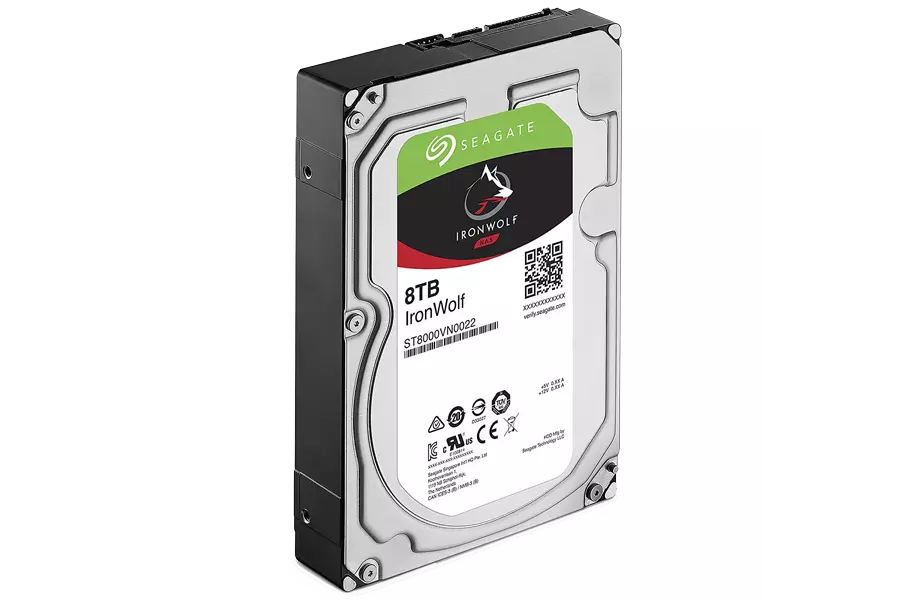
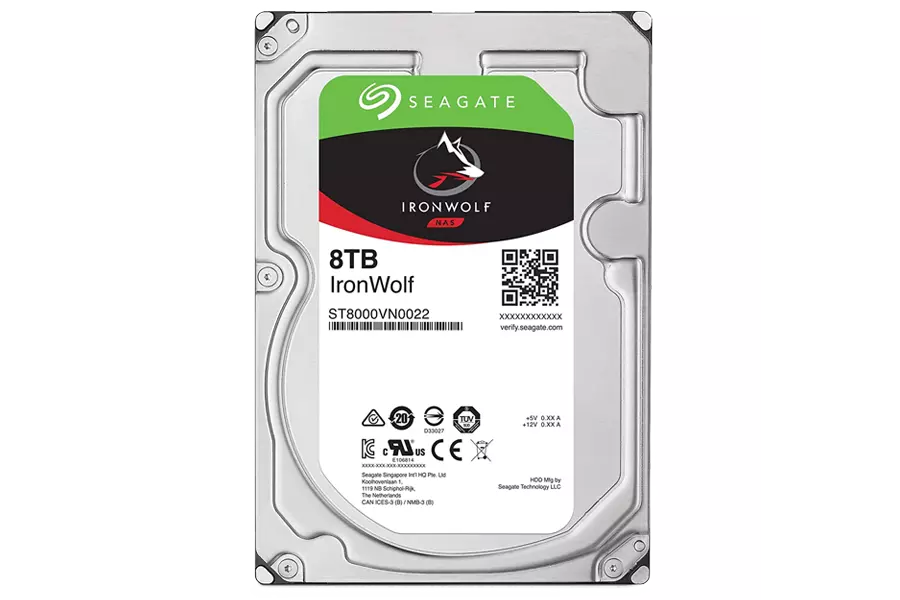
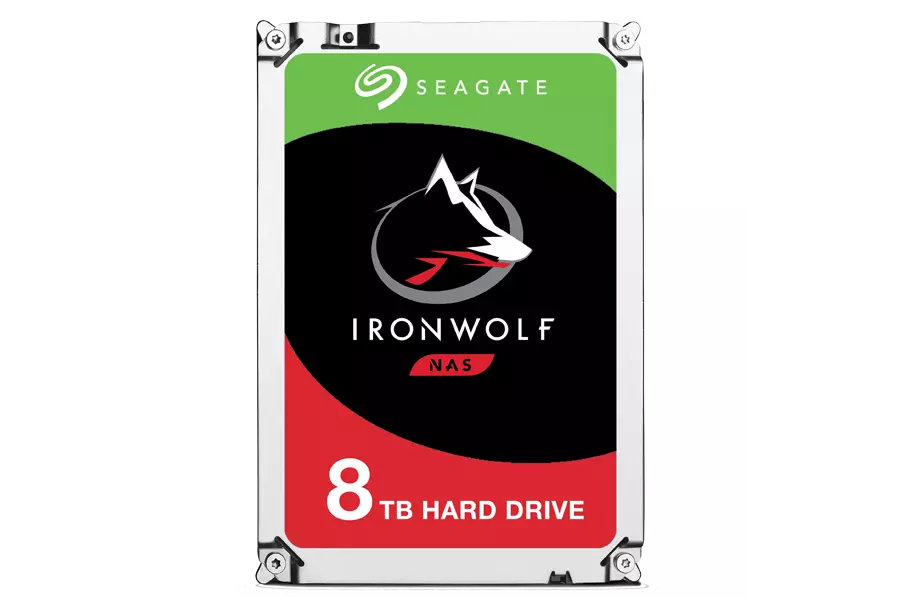
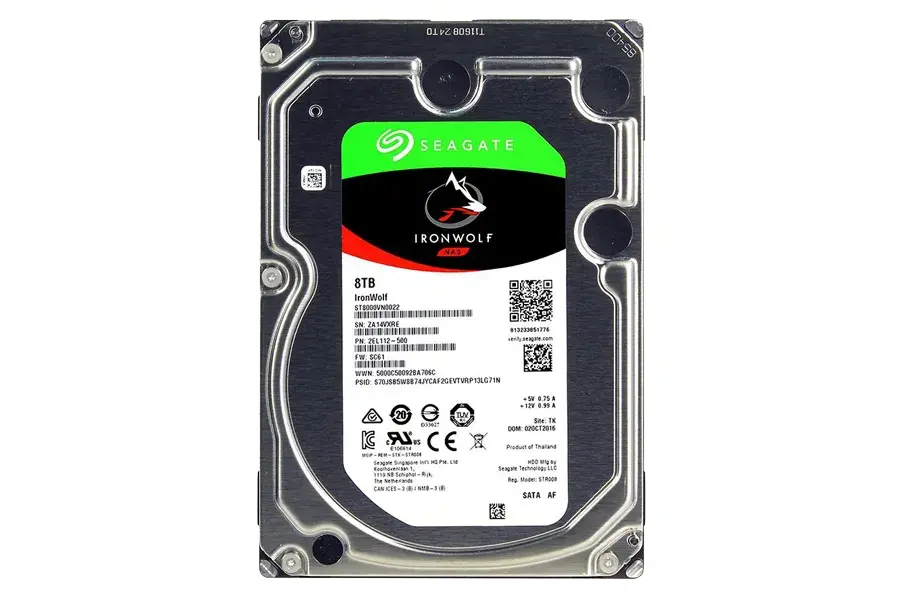
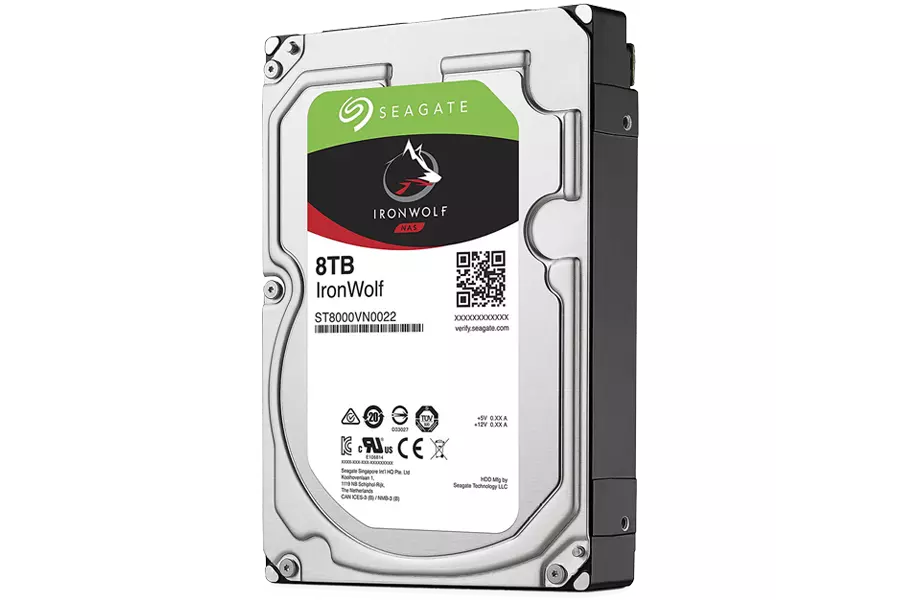
Seagate Ironwolf 8TB NAS Internal Hard Drive ST8000VN0022
Seagate Ironwolf 8TB NAS Internal Hard Drive ST8000VN0022
Description
Key Features:
- 24x7 capability
- Balance technology to support multiple drives in a system
- Compliant with RoHS requirements in China and Europe
- Full-track multiple-sector transfer capability without local processor intervention
- Low activity and idle power
- Native Command Queuing with command ordering to increase performance in demanding applications
- Off-the-shelf compatibility
- Performance-tuned for RAID applications
- Rated for 1M hours MTBF
- SeaTools diagnostic software performs a drive self-test that eliminates unnecessary drive returns.
- State-of-the-art cache and on-the-fly error-correction algorithms
- Streaming video optimization - consistent command completion times & ERC support
- Support for S.M.A.R.T. drive monitoring and reporting
- Supports ATA8 streaming commands
- Supports latching SATA cables and connectors
- TGMR recording technology provides the drives with increased areal density.
- Worldwide Name (WWN) capability uniquely identifies the drive
1.1 About the SATA interface
The Serial ATA (SATA) interface provides several advantages over the traditional (parallel) ATA interface. The primary advantages include:
- Easy installation and configuration with true plug-and-play connectivity. It is not necessary to set any jumpers or other configuration options.
- Thinner and more flexible cabling for improved enclosure airflow and ease of installation.
- Scalability to higher performance levels.
In addition, SATA makes the transition from parallel ATA easy by providing legacy software support. SATA was designed to allow users to install a SATA host adapter and SATA disk drive in the current system and expect all of the existing applications to work as normal.
The SATA interface connects each disk drive in a point-to-point configuration with the SATA host adapter. There is no master/slave relationship with SATA devices like there is with parallel ATA. If two drives are attached on one SATA host adapter, the host operating system views the two devices as if they were both “masters” on two separate ports. This essentially means both drives behave as if they are Device 0 (master) devices.
The SATA host adapter and drive share the function of emulating parallel ATA device behavior to provide backward compatibility with existing host systems and software. The Command and Control Block registers, PIO and DMA data transfers, resets, and interrupts are all emulated.
The SATA host adapter contains a set of registers that shadow the contents of the traditional device registers, referred to as the Shadow Register Block. All SATA devices behave like Device 0 devices. For additional information about how SATA emulates parallel ATA, refer to the “Serial ATA International Organization: Serial ATA Revision 3.2”. The specification can be downloaded from www.sata-io.org.
Specifications
- Formatted capacity (512 bytes/sector)** : 8000GB (8TB)
- Guaranteed sectors : 15,628,053,168
- Heads : 12
- Disks : 6
- Bytes per sector(4K physical emulated at 512-byte sectors) : 4096
- Default sectors per track : 63
- Default read/write heads : 16
- Default cylinders : 16,383
- Recording density (max) : 2177KBPI
- Track density (avg) : 370KTPI
- Areal density (avg) : 802Gb/in2
- Internal data transfer rate (max) : 1981Mb/s
- Maximum sustained data rate, OD read (MB/s) : 210MB/s
- ATA data-transfer modes supported
- PIO modes: 0 to 4
- Multiword DMA modes: 0 to 2
- Ultra DMA modes : 0 to 6
- I/O data-transfer rate (max) : 600MB/s
- Cache buffer : 256MB
- Height (max) : 26.11mm / 1.028 in
- Width (max) : 101.6mm / 4.010 in
- Length (max) : 146.99mm / 5.787 in
- Weight (max) : 780g / 1.72 lb
- Average latency : 4.0ms
- Average seek, read (typical) : <8.5ms
- Average seek, write (typical) : <9.5ms
- Startup current (typical) : 12V 1.8A
- Voltage tolerance (including noise) :
- 5V: ±5%
- 12V: ±10%
- Non-Operating (Ambient °C) : -40 to 70
- Operating ambient temperature (min °C) : 5
- Operating temperature (drive case max °C) : 70†
- Temperature gradient :
- 20°C per hour max (operating)
- 30°C per hour max (nonoperating)
- Relative humidity :
- 5% to 90% (operating)
- 5% to 95% (nonoperating)
- Relative humidity gradient (max) : 30% per hour
- Wet bulb temperature (max) :
- 26°C max (operating)
- 29°C max (nonoperating)
- Altitude, operating :
- –304m to 3048m
- (–1000 ft to 10,000 ft)
- Altitude, non-operating : (below mean sea level, max)
- –304m to12,192m
- (–1000ft to 40,000+ ft)
- Operational Shock (max) : 70 Gs at 2ms
- Non-Operational Shock (max) : 250 Gs at 2ms
- Vibration, operating
- 2Hz to 22Hz: 0.25 Gs, Limited displacement
- 22Hz to 350Hz: 0.50 Gs
- 350Hz to 500Hz: 0.25 Gs
- Vibration, non-operating
- 5Hz to 22Hz: 3.0 Gs
- 22Hz to 350Hz: 3.0 Gs
- 350Hz to 500Hz: 3.0 Gs
- Drive acoustics, sound power
- Idle*** :
- 2.7 bels (typical)
- 2.8 bels (max)
- Seek :
- 2.8 bels (typical)
- 2.9 bels (max)
- Non-recoverable read errors : 1 per 10 15 bits read
- Mean time between failures (MTBF), hours : 1M
- Rated Workload : Average annualized workload rating: <180 TB/year.
- The AFR specification for the product assumes the I/O workload does not exceed the average annualized workload rate limit of 180 TB/year. Workloads exceeding the annualized rate may degrade the product AFR and impact reliability as experienced by the particular application. The average annualized workload rate limit is in units of TB per calendar year.
- Warranty : To determine the warranty for a specific drive, use a web browser to access the following web page: http://www.seagate.com/support/warranty-and-replacements/ From this page, click on “Is my Drive under Warranty”. Users will be asked to provide the drive serial number, model number (or part number) and country of purchase. The system will display the warranty information for the drive.
- Load/Unload cycles (25°C, 50% rel. humidity) : 600,000
- Supports Hotplug operation per the Serial ATA Revision 3.2 specification : Yes
